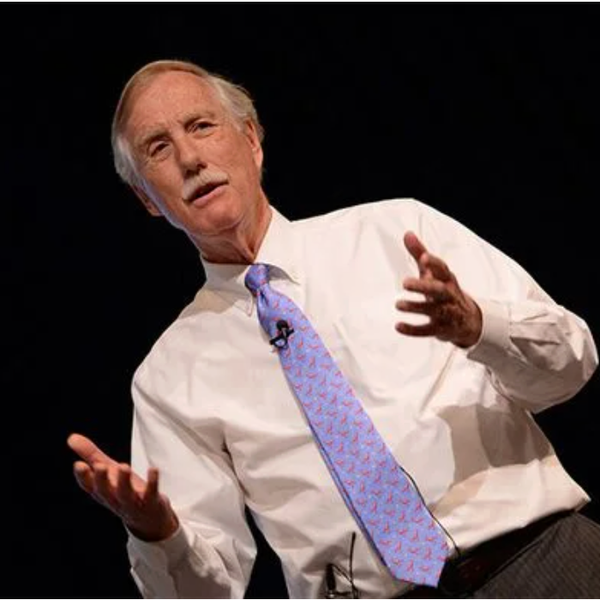
Reprinted with permission from AlterNet.
In the fall of 1831, an astute man of mixed-race heritage named Beverly Snow arrived in the city of Washington to seek his fortune. Snow and his wife Julia had recently purchased their freedom from a friendly master in Lynchburg, Virginia. Under Virginia law, emancipated slaves had to leave the state within a year or else be sold back into bondage. So the Snows came to the nation’s capital.
Audacious and hopeful, Snow sued in local court for the right to obtain a license to sell beer at the fall horse races. He won his lawsuit and went into business. Two years later, Snow opened Washington’s first restaurant on the corner of Sixth Street and Pennsylvania Avenue (a location now occupied by the flagship steakhouse of the Capitol Grille chain).
Imbued with dreams of the Founding Fathers, Beverly Snow named his restaurant the Epicurean Eating House, which he extolled as a place to pursue happiness. Snow’s newspaper advertisements touted the salubrious virtues of his signature dish: a fine green turtle soup. Soon Snow’s place was the toast of Washington, frequented by senators, lobbyists and tourists.
But the very success of a free man of color was felt by many a white man as a threat. In 1833, antislavery activists brought their subversive message of human rights to the capital of the slave-holding republic for the first time. In 1834, the economy crashed, leading to widespread unemployment among white workers. In 1835, angry whites retaliated against African-American aspirations by rioting in two-dozen American cities, attacking free blacks and their white allies. In August 1835, a white mob trashed Snow’s restaurant and sought to lynch its proprietor. Snow barely escaped.
One hundred and eighty-two years later, Barack Obama, another astute man of mixed-race heritage who found success in Washington, is leaving his Pennsylvania Avenue address. Like Snow, Obama leaves with his head held high but his name excoriated by a claque of remaining white men who resent his success and popularity. The phenomenon of the American backlash has returned to Washington.
Those disheartened by the impending inauguration of President Trump can console themselves with the long view of the backlash: Snow left town ahead of the mob and was lucky to get to Toronto, Canada. Obama leaves the presidential residence as the most popular president in a generation. He will be lucky if he gets a good night’s sleep and quality time on the putting green before a desperate citizenry demands his service again.
But glacially slow progress is cold comfort for defenders of a democracy under siege. Obama famously said, quoting Martin Luther King Jr., that the moral arc of history is long but bends toward justice. On the holiday celebrating King’s birthday, a hard truth has to be faced: the arc of American history is long and it bends toward backlash.
President-elect Trump’s tirade against Rep. John Lewis is a pure expression of the backlash. When Lewis asserted he would not attend Trump’s inauguration because his election lacked legitimacy, Trump told him to leave Washington politics and go back to his district. The last living leader of the 1960s civil rights movement had no place in national politics.
New Yorker editor David Remnick is rightly amazed that Trump criticized Lewis. But it’s not very hard to imagine past American presidents such as Richard Nixon, Woodrow Wilson or Andrew Jackson making a similar comment to a black leader. Trump is part of a tradition that has renewed itself, not died out.
For the past two centuries, American backlash has occurred when white leaders and a substantial part of the white population mobilize to attack, deter and quell African-American political aspirations. Such impulses have persisted throughout the history of the American peoples. They regularly culminate in social turbulence and radical change. Welcome to the Trump backlash. We’ve seen this show before. In the 1830s, the emerging anti-slavery movement faced violent retaliation in the streets. Congress adopted the “gag rule” forbidding debate about slavery. The abolitionist movement spread, the resistance of the North stiffened and Lincoln led the Republic through the ordeal of the Civil War. The post-Civil War constitutional amendments inaugurated a new republic.
In the mid-1870s, southerners rebelled against the Reconstruction the North imposed on the defeated states of the Confederacy. In April 1873, a white riot in Colfax, Louisiana killed 150 black people and three whites. A historical marker of the event (standing today and unaffected by “political correctness”) approvingly notes that the massacre of the blacks “marked the end of carpetbag misrule in the South.” That’s pretty much how Breitbart would cover the story today.
The post-Civil War backlash actually culminated in 1877 in a Washington hotel room when Democratic and Republican party bosses agreed to a deal to resolve the contested 1876 election. The Democrats accepted a Republican president in return for a GOP promise to drop Abraham Lincoln’s vision of a reconstructed post-slavery south. Backlash lead to reactionary success of white elites, starting with the disenfranchisement of black voters.
America suffered another white backlash in 1919. Once again, black ambitions were on the rise. The National Association for the Advancement of Colored People was founded in 1914, and Booker T. Washington, the accomodationist titan, died in 1915. The great migration from the Jim Crow South to the freer cities of the North liberated millions. The participation of black soldiers in the Great War 1916-1918, fostered a new mood of pride and militancy among African Americans.
The white response was both bureaucratic and violent. In 1914, President Woodrow Wilson segregated the previously integrated federal workforce. A young Justice Department official named J. Edgar Hoover began tracking civil rights leaders as a threat to public safety, and the lynching of black men spread. As a new study documents, black soldiers in uniform were a favorite target. This backlash reached a frenzied peak in the summer of 1919 when white mobs attacked blacks in dozens of American cities, for offenses real and imagined.
Another regular feature of the American backlash: resistance. When white mobs, instigated by racially inflammatory coverage in the Washington Post, started attacking black Washingtonians in July 1919, black war veterans rallied residents to take up arms and fight back. While scores of blacks had been killed in Omaha and Chicago that summer, only three blacks (and three whites) were killed in Washington.
Black resistance was the spirit of America itself, declared NAACP editor W.E.B. DuBois as armed black men rallied to defend the LeDroit park neighborhood near Howard University. “Make way for Democracy,” he wrote. “We saved it in France and by the Great Jehovah we will save it in the United States of America.”
America saw another white backlash in 1968, as the Second Reconstruction, wrought by King and President Lyndon Johnson, took hold. The Civil Rights Act of 1964 and the Voting Rights Act of 1965 empowered re-enfranchised black voters across the South. The Black Power movement emerged, impatient with King’s mild-manner militance. The black nationalists advocated armed defense against police brutality, and the rioting of black mobs from Watts to Newark scared the bejesus out of the whole country.
White militance found expression in the frankly racist presidential bids of Alabama governor George Wallace in 1964 and 1968. Reporters discovered the so-called Silent Majority of white Americans who said they wanted to “take back their country.” Edgar Hoover stepped up his covert COINTELPRO program to destroy black leadership. Martin Luther King was assassinated by a white racist. Black Panther leader Fred Hampton was assassinated by Chicago police. In the 1968 election, Republican Richard Nixon co-opted the backlash with a “Southern Strategy” that offered a politics of resisting black demands without resorting to nakedly racial appeals. Nixon’s racially calibrated strategy won him a landslide in 1972.
The backlash of 2016 shares many features with its predecessors. Black political success, in the form of Obama’s presidency, provoked fear and resentment among many whites. Racist rhetoric proliferated. Black political organization was perceived as inherently violent. Like the American Antislavery Society in the 1830s and the Southern Christian Leadership Conference in the 1960s, the Black Lives Matter movement was accused (with equally scant evidence) of instigating violence against whites. The effort to disenfranchise black voters is now implicitly sanctioned by the Supreme Court. For Trump to now savage Lewis for questioning the legitimacy of the status quo leadership, well, that’s a been punishable offense in every American backlash.
Progress is undeniable. The impunity of mob violence has been curbed. Racial profiling and police violence remain, along with an appalling level of gun violence. The hard lesson of 2016 was that the dynamics of the American backlash have not changed. The strength of the backlash, while diminished, is not vanquished.
The fear that black aspirations are a threat to the well-being of white people seems embedded in American culture and history. Barack Obama’s election (and re-election) vindicated the widespread aspiration to transcend that history. Nonetheless, Trump proved that tapping into these fears remains an effective majoritarian strategy, at least among white voters outside of New York and California.
If there is any consolation on the King holiday of 2017, it is the assurance that the American backlash is sure to generate new forms of multiracial resistance in the spirit of America itself. The union of free Americans who ejected slavery, embraced voting rights, shook off Jim Crow, and elected a mixed-race president is nothing if not resilient. We’re not going anywhere. Beverly Snow had to move all the way to Canada. Barack Obama leaves Pennsylvania Avenue in a few days, but he’s only moving two miles away.
Jefferson Morley is AlterNet’s Washington correspondent.
IMAGE: Donald Trump holds a rally with supporters in Anaheim. REUTERS/Jonathan Ernst








